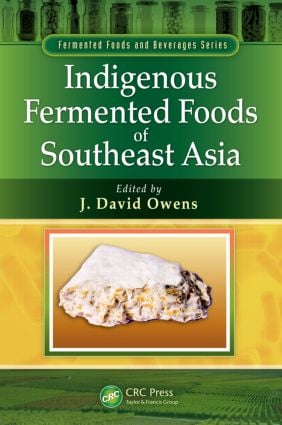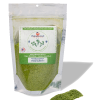Indigenous Fermented Foods of Southeast Asia – Hardback Buy Cheap Cheap
$252.77 Original price was: $252.77.$202.22Current price is: $202.22.
Free Shipping On Orders Over $50.
Brings Together Current Knowledge and State-of-the-Art Information on Indigenous Fermented Foods
Fermented foods and beverages span a range of root crops, cereals, pulses, vegetables, nuts, fruits, and animal products. Southeast Asia has a long history of utilizing fermentation in the production and preservation of foods, and is widely recognized for its prominent use. Indigenous Fermented Foods of Southeast Asia examines some indigenous fermented foods of Thailand, Vietnam, Indonesia, Malaysia, and the Philippines, focusing on the chemical, microbiological, and technological factors associated with their manufacture, quality, and safety. This text establishes a need for an adequate understanding of the fermentation process to ensure safe and reliable practices, as well as the consistent production of a quality product.
The authors describe the production, microbiology, biochemistry, nutritional value, and dietary roles of a wide variety of indigenous fermented foods of Southeast Asia. Emphasizing the microbiological and biochemical processes in fermentations and examining the factors that influence the development of the characteristic microflora and chemical changes induced, they accurately describe each process and critically evaluate the roles of microbes in the fermentation. The classification of products is based on their microbial ecology (i.e. the predominant microbes involved), and the text includes examples of every major category of fermented food. The book covers tempe, starter cultures, sweet/sour/alcoholic rice and cassava fermentations, alcoholic fermentations, soy sauce, Bacillus fermentations, and lactic acid bacterial fermentations of vegetables, durian fruit, rice noodles, meats, and sea foods.
This book answers a series of basic questions addressing:
- Dominant/desired microbes
- Suitable factors in processing and the environment
- Commonly present microbes
- Compounds utilized as major carbon and energy sources
- Sources of fermentable carbohydrates
- Main biochemical activities and chemical changes
- True yield of product per kilogram of initial raw materials
- Possible hazards associated with a product
- How possible hazards may be minimized or eliminated
- Research needs and opportunities
Indigenous Fermented Foods of Southeast Asia
evaluates the state of scientific knowledge of the fermentations and identifies specific questions that need to be answered in order to promote the reproducibility, safety and future prospects of these fermented foods.
This book is a great guide for those interested in indigenous fermented foods of Southeast Asia. To use it, simply read through the chapters to learn about different fermented foods like tempe, soy sauce, and more. Understand the processes involved in their production, microbiology, and biochemistry. Note that when studying the fermentations, pay attention to the factors influencing the microbes and chemical changes. There are no specific maintenance requirements as it’s a book. Just keep it in a dry place to avoid damage. When considering the information, be aware of the possible hazards associated with the fermented foods and how to minimize them as described in the book.
Be the first to review “Indigenous Fermented Foods of Southeast Asia – Hardback Buy Cheap Cheap” Cancel reply
Related products
Dried Fruits & Vegetables
Fresh Vegetables
Dried Fruits & Vegetables






Reviews
There are no reviews yet.